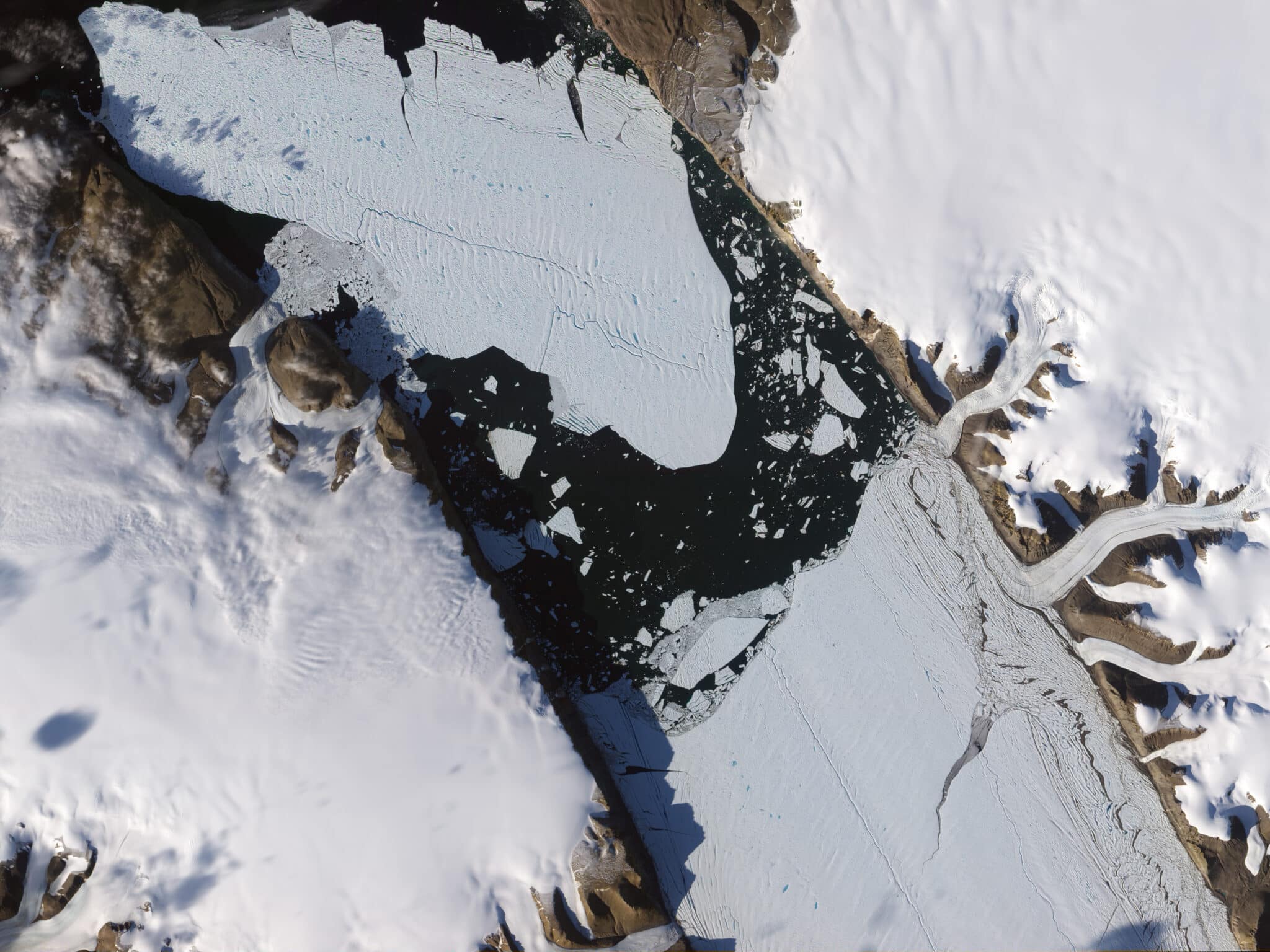‘Bad News’: Unexpected Melting of Greenland Glacier Could Double Sea-Level Rise Projections
The way that the Petermann Glacier in Northwest Greenland is melting indicates that current models are too conservative.

 Why you can trust us
Why you can trust us
Founded in 2005 as an Ohio-based environmental newspaper, EcoWatch is a digital platform dedicated to publishing quality, science-based content on environmental issues, causes, and solutions.
By Olivia Rosane
A glacier in the north of Greenland is melting faster and in a different way than scientists previously thought, and this has troubling implications for the future speed of global sea-level rise.
The new discovery was published in the Proceedings of the National Academy of Sciences Monday. The scientists found that warming ocean water had melted a cavity in the bottom of Petermann Glacier taller than the Washington Monument, as The Associated Press reported. If other glaciers in Greenland and Antarctica behave the same way, it could double predictions for how quickly the burning of fossil fuels will melt ice and raise sea levels.
“It’s bad news,” study author Eric Rignot, a University of California, Irvine (UCI), glaciologist, told the AP. “We know the current projections are too conservative.”
“This is an order of magnitude larger than expected for grounding lines on a rigid bed.”
The Petermann Glacier is a massive glacier in Northwest Greenland that contains enough ice to raise sea levels by a little more than a foot, the study authors noted. It is one of four Greenland ice masses that make up “the largest threat for rapid sea-level rise from Greenland in the coming decades” since they drain into the ocean below sea level.
Up until recently, however, the glacier was relatively stable, gaining about as much mass each year as it lost. That began to change in 2016, when the center of its grounding line began to edge backward at a rate of 0.6 miles per year.
A glacier’s grounding line is the place where it moves from being supported by land to floating on the ocean, and it’s this feature of Petermann that is the focus of the new study. The scientists from UCI, NASA’s Jet Propulsion Laboratory at the California Institute of Technology, the University of Houston, Finland’s Iceye mission, China’s Tongji University, the German Aerospace Center, and the Italian Space Agency used satellite radar data to learn that the grounding line was moving significantly with the tides.
“Petermann’s grounding line could be more accurately described as a grounding zone, because it migrates between 2 and 6 kilometers [approximately 1.2 to 3.7 miles] as tides come in and out,” lead author Enrico Ciraci, a UCI assistant specialist in Earth system science and NASA postdoctoral fellow, said in a statement. “This is an order of magnitude larger than expected for grounding lines on a rigid bed.”
This movement, in turn, accelerated ice melt.
“These ice-ocean interactions make the glaciers more sensitive to ocean warming,” Rignot explained.
Between 2016 and 2022, the grounding line retreated by more than two miles. During that time, the warmer ocean water melted a 669-foot tall cavity at the bottom of the glacier. The melt rates around the cavity for 2020-21 were 50% greater than the melt rates for 2016-19, and, during 2022, the cavity stayed open the entire year.
What’s especially concerning to the study authors is that what happens in Petermann may not stay in Petermann.
“These dynamics are not included in models,” Rignot said.
If they were included, it could double sea-level rise projections, the study authors observed.
Hélène Seroussi, a glaciologist at Dartmouth College who was not involved with the study, cautioned The Washington Post that models for ice melt and sea-level rise would not incorporate these findings overnight, since scientists still need to determine how many glaciers they really apply to. However, Seroussi acknowledged that the measurements were unprecedented.
“The melt rates reported are very large, much larger than anything we suspected in this region,” Seroussi said.
Andreas Muenchow of the University of Delaware, a scientist who studies Petermann Glacier but was also not a part of the study, further told the Post that the high melt rates were observed over a relatively small area.
“My main takeaway is that models need to be improved,” Muenchow said.
Reposted with permission from Common Dreams.
Subscribe to get exclusive updates in our daily newsletter!
By signing up, you agree to the Terms of Use and Privacy Policy & to receive electronic communications from EcoWatch Media Group, which may include marketing promotions, advertisements and sponsored content.

 233k
233k  41k
41k  Subscribe
Subscribe 



